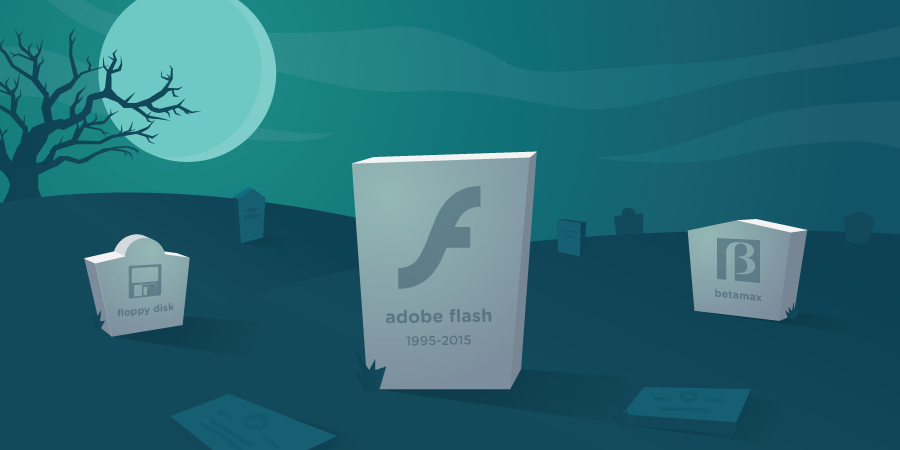Adobe Flash Becomes Animate CC: The Good, The Bad, and The Ugly
 John
|
John
|

In an effort to stay relevant in the post-Flash era, Adobe recently announced a major shift in the way they’re approaching animation software in Q1 2016. Their flagship animation software, Flash Professional, is receiving a much-needed facelift, becoming Animate CC. Though the consensus reaction from the animation community has been overwhelmingly positive – web designers across the world desperate for Adobe to embrace modern web standards and practices are elated – not all tears have been tears of joy.
So, why the change? Well, Flash has developed quite a reputation in its 20-year existence. From online games to keyframe animation to rich web content, Adobe’s workhorse program has been the de facto choice for a wide array of designers, animators and developers since its inception.
But in creating a beast that has been distributed across multiple operating systems and code bases, Adobe has also created an environment ripe for hacking. An exhaustive history of software vulnerabilities has led to companies like Apple, Facebook, and Amazon dropping their support and severing ties one-by-one. Additionally, massively inefficient code has led to slow load times and unacceptable battery drain on mobile devices in an era where battery life in king.
Enter: Animate CC.
The Good
With Animate CC, Adobe is finally acknowledging what web users have been aware of more over a decade – it’s time to trim the fat and get with the times. Along with tidying up the code, Animate introduces a plethora of new features and enhancements that Adobe hopes will make it relevant again on the post-Flash web. These features include:
- Improvements to tools more closely associated with traditional animation software, such as pencil and brush controls, audio syncing controls and more advanced onion skinning
- Direct integration with Adobe Stock, Libraries, Capture, and other Creative Cloud apps and extensions
- New vector art brushes and the ability to create your own
- A wide range of file output compatibility, including HTML5 canvas, WebGL, Flash, and my personal favorite, animated SVG
- Support for 4K+ video export resolution – they’ve even included the ability to optimize and export older, low-res Flash files in any resolution
The Bad
This past fall I took a 2D animation class to tidy up a few lingering degree requirements. My instructor was a professional animator who is well-versed in Adobe Flash. In fact, before becoming a teacher he made his living animating in Flash. When I brought up Adobe’s recent paradigm shift with him I wasn’t met with the reaction I was anticipating. Instead of salivating at the new tools and refinements being made available to him in his animation software of choice, he was noticeably taken aback. Apparently he’s had a consistently troubling history with Flash. In the past, he claims, Adobe has tried to make it do too many things for too many people for too long. Version updates added and removed toolbars, rearranged buttons and interfaces, and eventually hindered his relationship with the program to the point that he decided to teach my class using completely different animation software altogether. It makes sense, then, that he grimaced in pain when I notified him of another major update.
The Ugly
Ultimately, Adobe is going through a major identity crisis. The new brand positioning is a step in the right direction, but the ugly truth is that Flash is dying, and the longer they cling to its mangled, bloated corpse, the longer they confuse and frustrate their user base. Even uglier is the fact that with Animate CC they’ve muddied the waters of traditional animation even more, further alienating users like my teacher who are becoming more and more willing to seek out alternative solutions.
Over the past decade Adobe has successfully reinvented themselves with web-focused applications such as the Edge family of programs and their web-based font platform Typekit. Animate CC is a big idea and a difficult but necessary first step toward embracing the future of animation software, but for the moment it will look to many users who have been burned in the past as just another fresh coat of paint.
Only time will tell what people think of Adobe’s big move. I personally can’t wait to give it a shot as both a web designer and now a student of the animation world. Animate CC gets released early 2016.
Subscribe to Our Blog
Stay up to date with the latest marketing, sales, and service tips.

